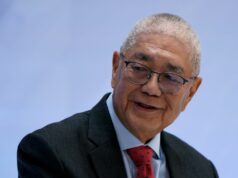Yields on term deposits decline as offer attracts strong demand
THE CENTRAL BANK’S term deposit facility (TDF) was more than twice oversubscribed on Wednesday, bringing yields down, on the back of strong demand from banks due to recent reserve requirement cuts.
The Bangko Sentral ng Pilipinas (BSP) received P67.548 billion in tenders yesterday, higher than the P30 billion placed on the auction block. This is also higher than the P31.407-billion tenders received last week for its P20-billion offer.
Bids for the seven-day papers amounted to P25.42 billion, which led to the full award of the P10 billion in offer. This is also higher than the P14.41 billion in tenders received a week ago.
Banks sought yields ranging between 4.5% and 4.6% for the one-week term deposits, slightly lower than the 4.58-4.65% margin seen a week ago. This caused the average yield for the papers to decline to 4.5537% from the previous week’s 4.624%.
Meanwhile, demand for the 14-day deposits amounted to P22.095 billion, well above the P10 billion on offer. This is also an increase from the previous week’s bids worth P16.997 billion.
Accepted yields settled within 4.5-4.6999%, declining from the 4.65-4.75% margin seen a week ago. As a result, the average rate of two-week tenor dropped to 4.6129% yesterday from last week’s 4.7002%.
On the other hand, the 28-day term attracted tenders totalling P20.033 billion versus the P10 billion placed in the auction block.
Banks sought yields between 4.5% and 4.75%, leading to an average rate of 4.6347%. The BSP did not offer one-month deposits last week.
The TDF stands as the central bank’s primary tool to shore up excess funds in the financial system and to better guide market interest rates.
The BSP’s Monetary Board last month kept rates unchanged on expectations of steady inflation and economic growth and as it monitors the impact of recent monetary adjustments.
The central bank left the interest rate on the BSP’s overnight reverse repurchase facility untouched at 4.5%. The interest rates on the overnight lending and deposit facilities were likewise held steady at five percent and four percent, respectively.
BSP Governor Benjamin E. Diokno said it is “normal” for TDF to be oversubscribed, which can be attributed to excess liquidity driven by the regulator’s recent reductions to banks’ reserve requirement ratio (RRR).
“There was a time na undersubscribed siya (when the TDF was undersubscribed). Don’t worry too much. Mga blip lang yan (Those are just blips). The economy is growing much faster,” Mr. Diokno told reporters on Wednesday.
After a 100-basis-point RRR cut across all banks last May 31, the BSP trimmed the reserve ratios of universal and commercial lenders and thrift banks by another 50 bps last Friday to 16.5% and 6.5%, respectively.
Another 50-bp reduction will be implemented on July 26 to finally bring the RRR of big banks to 16% and thrift banks to 6%, which completes the phased cuts the BSP announced in May.
Last Monday, asked if the central bank is expecting higher demand for TDF in the coming weeks, retired BSP Deputy Governor Diwa C. Guinigundo said: “Not really because we have actually stabilized the volume of TDF offerings because that’s what we expect to happen in terms of liquidity. More or less stable yung liquidity situation considering on one hand, you have a balance of payments surplus. If you have a balance of payments surplus, that should be expansionary. It will add more peso liquidity to the system.”
“On the other hand, you still have the national government’s money inside the BSP. That actually tightens liquidity conditions. If the government would be able to start spending, and spending more on infrastructure, paying their contractors and their creditors…then you will have a more normal liquidity condition which could possibly increase the TDF volume…. We don’t see that yet,” Mr. Guinigundo said. — Reicelene Joy N. Ignacio



